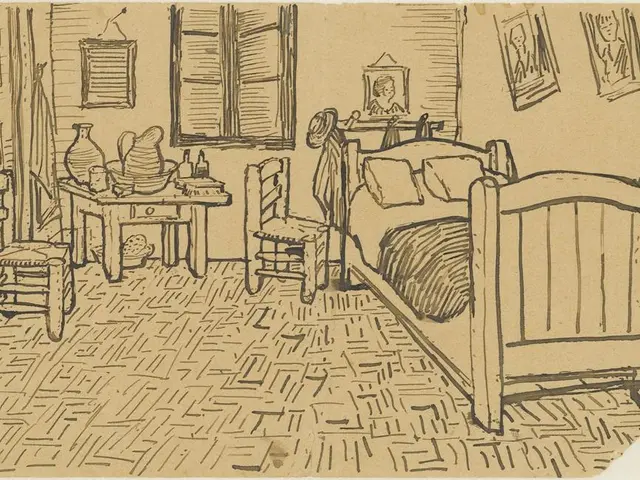Cleaning a Silvered Dial and Brass Accents on a Junghans Bracket Clock
In the world of antique clocks, the Junghans bracket-style clock is a treasure worth restoring. This German-made timepiece, purchased in September 2020, boasts a mahogany veneered case with attractive brass accents and a carrying handle on top. Despite a small piece of veneer missing on the right side of the base and the need for replacement chrome feet, the Regency style case is in reasonably good condition.
The movement of the clock has already been serviced, leaving the task of freshening up the case at hand. After cleaning with Murphy's soap and three coats of shellac, the case has been revitalised. The dial and brass features, however, require a more careful approach due to the delicate silvering on the dial.
When restoring a clock, the method of cleaning the dial depends on personal preference. Some might opt for cleaning solutions like mild liquid soap and Q-tips, while others might choose more abrasive methods. However, it's essential to remember that silvered dials can be easily damaged during cleaning. A cautious approach is necessary.
Expert restoration practices advise avoiding polishing or abrasive cleaning on intact silvered surfaces, as this can wear through the delicate silvering layer and damage shallow hand-etched markings. If the silvering is damaged or heavily worn, the dial face can be taken back carefully to bare brass using very fine sandpaper, removing as little material as possible to protect shallow engraving.
Restoration involves re-silvering the brass dial by cleaning, then graining the surface, and applying silvering powder followed by a finishing powder, carefully rubbing them into the surface. Excess powder is washed away gently. Some restorers apply a protective clear lacquer coat over the silvering to prevent finger marks and wear from handling, though this requires only gentle wiping rather than polishing over time.
For engraving, if the original engraving wax (often mixed with shellac) is damaged, it can be replaced by purchasing similar wax and melting it into cleaned engravings to restore detail and durability.
The Junghans company, once a prolific producer of clocks, has since established itself as a prominent manufacturer of high-quality wristwatches. Despite this shift, the Junghans bracket-style clock remains a testament to their craftsmanship. Its quality was a significant factor in choosing it over other options, making it a better deal for its owner.
In summary, careful mechanical cleaning combined with traditional re-silvering powders, preservation or replacement of wax fills in engravings, and optional protective lacquering are the best approaches for restoring silvered clock dials. Handling should minimise fingerprints, and occasional gentle wiping is sufficient for preservation. By following these practices, we can preserve the history and beauty of these timeless pieces.
In the realm of vintage clocks and home-and-garden decor, the Junghans bracket-style clock stands as a valuable treasure, showcasing elegant Regency style. As a fashion-and-beauty accessory, the fully restored Junghans clock, with its refurbished case and re-silvered dial, seamlessly complements the home lifestyle.





